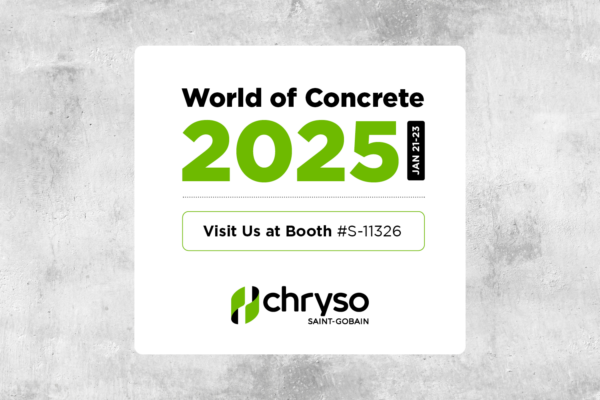Frequently Asked Questions About CLARENA® MC2000 – TB-1602

What is CLARENA® MC2000?
CLARENA® MC2000 is a patented polycarboxylate (PC) based ASTM C494 Type A and F mid-range water reducer that is formulated with proprietary chemicals to provide best in class performance when used in concrete mixes containing a wide range of clay bearing aggregates. CLARENA® MC2000’s robust dispersion capability in the presence of clay bearing aggregates results in consistent and predictable water reduction, excellent early and later age compressive strength, near neutral set times and superior finishability properties. CLARENA® MC2000 should be considered for use by ready mix, precast and prestress producers when moderate to high levels of clays are present in the fine aggregate and laboratory and field test results confirm acceptable overall performance. CLARENA® MC2000 typical water reducer dosage rates range from 2-6 oz/cwt (130 to 391 mL/100 kg) and typical mid-range water reducer rates range from 7-15 oz/cwt (456 to 978 mL/100 kg).
How does CLARENA® MC2000 mitigate the detrimental impact of clays in concrete?
Clay bearing fine aggregates, commonly found in the southwest region of the United States, can adversely affect the overall performance of some types of admixtures. Many clay minerals expand in the presence of water and can intercalate and absorb the polyalkylenes oxide component of PC based admixtures. This thereby reduces the cement dispersion and water reduction capabilities of the PC based admixture. CLARENA® MC2000 is formulated with proprietary sacrificial agents that are absorbed and intercalate with clays before the PC component of the admixture. Therefore, the PC based admixture retains excellent, robust water reduction and other desirable properties at low dosage rates.
How can I determine the clay content of a fine aggregate?
The sand equivalency (SE) test (ASTM D2419-Standard Test Method for Sand Equivalent Value of Soils and Fine Aggregate) is commonly used in the concrete industry to estimate cleanliness and clay contents of fine aggregates. The SE test measures the ratio of clay-like material to sand size particles that pass the #4 sieve. The higher the SE value, the lower the clay content. A second commonly used and oft en modified test procedure is the methylene blue test (ASTM C837-Test Method for Methylene Blue Index of Clay). This test method measures the clay adsorption of methylene blue dye, which is then calculated as a methylene blue index (MBI).
We have developed a modified methylene blue test procedure using a colorimeter, which measures the absorbance of a given solution at specific light wavelengths. MB content is correlated to the light absorbed at a specific wavelength, thereby eliminating visual interpretation of the blue halo. A methylene blue value (MBV) is then calculated, with a higher MBV representing higher clay contents. Finally, MBV’s are used to calculate % of clay contents for a particular fi ne aggregate sample. Clay contents less than 0.4% can be considered to be relatively low, while clay contents greater than 0.8% can be considered to be relatively high. Typically, when clay contents are greater than 0.4%, slump (dosage) efficiency and the overall performance of polcarboxylate based admixtures can be adversely affected.
Do manufactured and natural fine aggregates throughout North America contain high clay contents?
Recent concrete construction industry trends including market, environmental and regulatory factors, have caused a decreased availability of high quality natural sands and resulted in a growing dependence on manufactured sands. In general, manufactured sands have a more irregular shape with higher clay contents, compared to natural sands. However, some natural sands also have high clay contents that can cause slump response issues with PC based admixtures. The southwest region of the United States is prevalent for high clay aggregates, although high clay content aggregates are sporadically found throughout North America.

Is CLARENA® MC2000 compatible with all competitive admixtures?
CLARENA® MC2000 is fully compatible with all commercially available admixtures except naphthalene based admixtures including DARACEM® 19 and DARACEM® 100. It is also expected CLARENA® MC2000 will be compatible with most standard competitive admixtures. However, it is recommended pre-job testing with specific concrete mix designs is conducted to verify cement, supplemental cementitious materials (SCM’s), aggregate and admixture compatibility and performance.
What is the recommended batch sequencing for CLARENA® MC2000?
In most cases, it is recommended that CLARENA® MC2000 be added to the concrete mix near the end of the batch sequence for optimal performance. Different sequencing may be used if testing shows better performance. CLARENA® MC2000 should not come in direct contact with any other admixture during batching.
When and where is CLARENA® MC2000 available?
CLARENA® MC2000 is commercially available in the US and Canada. CLARENA® MC2000 samples are also available for testing.
What is CLARENA® MC2000 status with ASTM C494 testing and certification?
Final one year non NTPEP ASTM C494 Type F report is available and final one year NTPEP ASTM C494 Type A and F reports are available October 2017.





